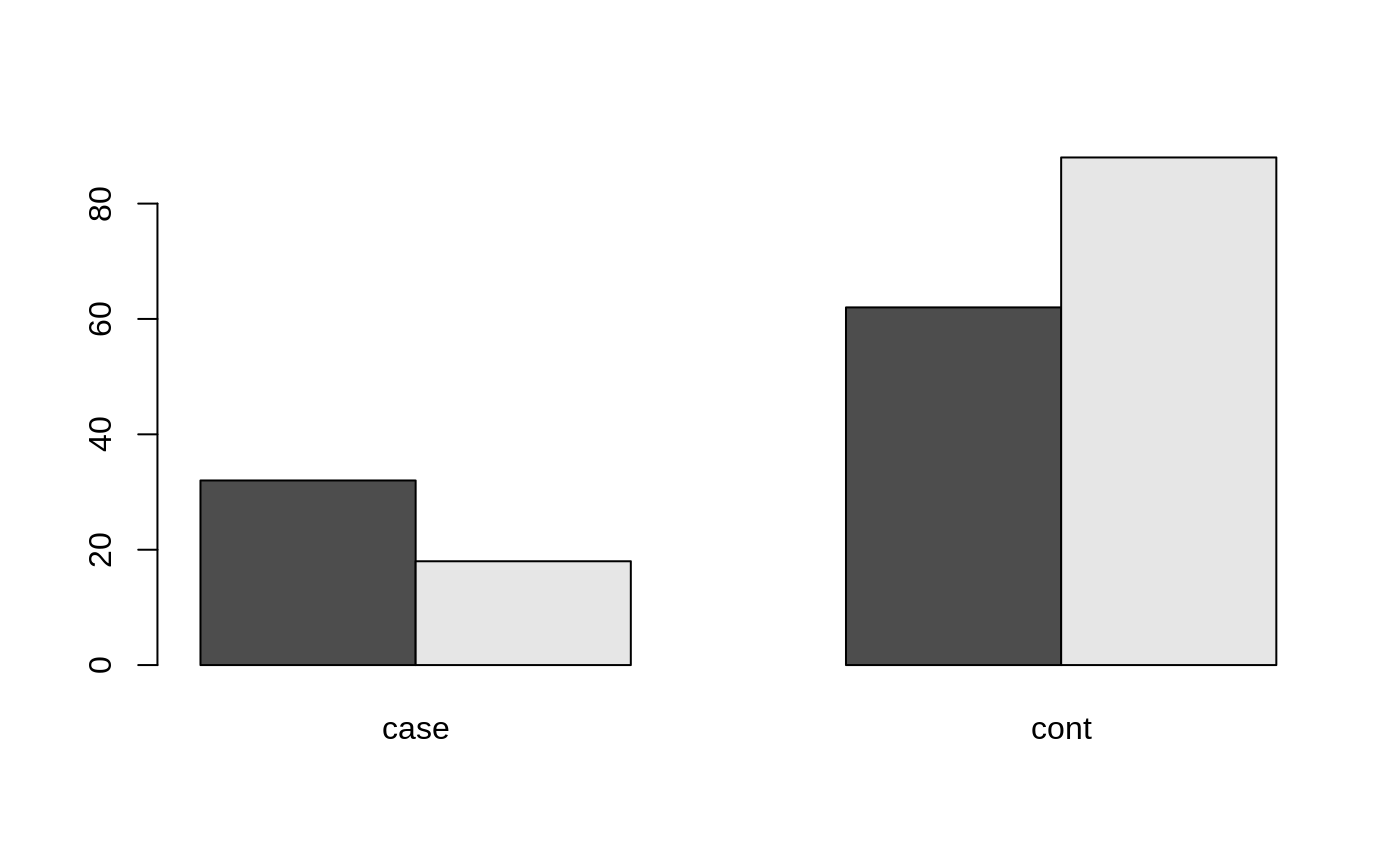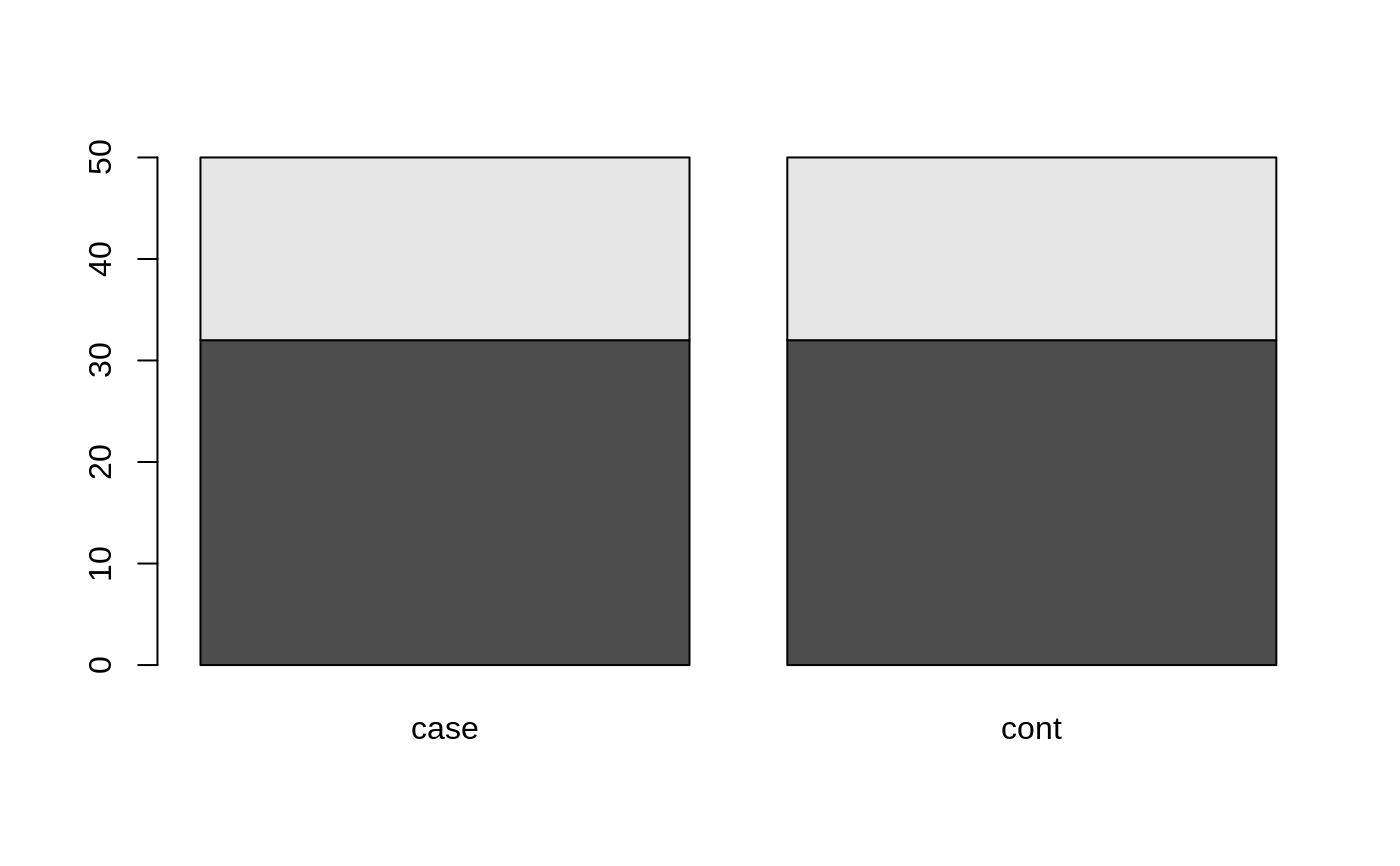Find Matched Control Group
matchControls.RdFinds controls matching the cases as good as possible.
matchControls(formula, data = list(), subset, contlabel = "con", caselabel = NULL, dogrep = TRUE, replace = FALSE)
Arguments
| formula | A formula indicating cases, controls and the variables to be matched. Details are described below. |
|---|---|
| data | an optional data frame containing the variables in the
model. By default the variables are taken from the environment
which |
| subset | an optional vector specifying a subset of observations to be used in the matching process. |
| contlabel | A string giving the label of the control group. |
| caselabel | A string giving the labels of the cases. |
| dogrep | If |
| replace | If |
Details
The left hand side of the formula must be a factor
determining whether an observation belongs to the case or the
control group. By default, all observations where a grep of
contlabel matches, are used as possible controls, the rest is
taken as cases. If caselabel is given, then only those
observations are taken as cases. If dogrep = TRUE, then both
contlabel and caselabel can be regular expressions.
The right hand side of the formula gives the variables that
should be matched. The matching is done using the
daisy distance from the cluster package, i.e.,
a model frame is built from the formula and used as input for
daisy. For each case, the nearest control is
selected. If replace = FALSE, each control is used only
once.
Value
Returns a list with components
Row names of cases.
Row names of matched controls.
A factor with 2 levels indicating cases and controls
(the rest is set to NA.
Examples
Age.case <- 40 + 5 * rnorm(50) Age.cont <- 45 + 10 * rnorm(150) Age <- c(Age.case, Age.cont) Sex.case <- sample(c("M", "F"), 50, prob = c(.4, .6), replace = TRUE) Sex.cont <- sample(c("M", "F"), 150, prob = c(.6, .4), replace = TRUE) Sex <- as.factor(c(Sex.case, Sex.cont)) casecont <- as.factor(c(rep("case", 50), rep("cont", 150))) ## now look at the group properties: boxplot(Age ~ casecont)



